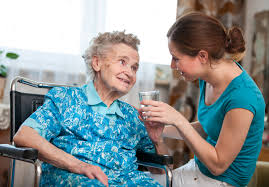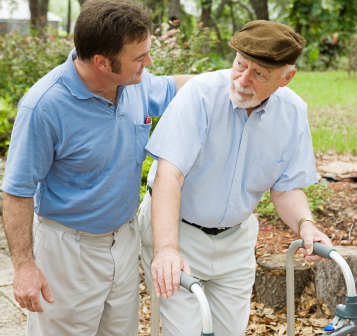Smoothing Out the Moving In Process
Smoothing Out the Moving In Process
Author: Mark Parkinson BsPharm: President AFC-CE
Credit Hours 3 - Approximate time required: 180 min.
Educational Goal
Teach how to make the new resident move in process easier with less problems.
Educational Objectives
- Review the actions to take before the new resident moves in.
- Make suggestions for moving in day.
- Provide expectations and recommendations for after the new residents moves in.
- Teach about 3 different care perspectives
- Provide additional helpful hints.
Procedure:
Read the course materials. 2. Click on exam portal [Take Exam]. 3. If you have not done so yet fill in Register form (username must be the name you want on your CE certificate). 4. Log in 5. Take exam. 6. Click on [Show Results] when done and follow the instructions that appear. 7. A score of 70% or better is considered passing and a Certificate of Completion will be generated for your records.
Disclaimer
The information presented in this activity is not meant to serve as a guideline for patient management. All procedures, medications, or other courses of diagnosis or treatment discussed or suggested in this article should not be used by care providers without evaluation of their patients’ Doctor. Some conditions and possible contraindications may be of concern. All applicable manufacturers’ product information should be reviewed before use. The author and publisher of this continuing education program have made all reasonable efforts to ensure that all information contained herein is accurate in accordance with the latest available scientific knowledge at the time of acceptance for publication. Nutritional products discussed are not intended for the diagnosis, treatment, cure, or prevention of any disease.
Smoothing Out the Moving In Process

Very few people like the labor involved in moving to a new home. I can genuinely say that my wife dislikes the moving process so much that it has almost becomes a phobia. Who’s to blame her for her feelings of dread and concern. There is the exhausting and confusing work of sorting, packing, and physically moving. There’s the emotional trauma of leaving the comfortable behind, coupled with the feeling of loss of saying goodbye and the fear of heading for an uncertain future. There is also the constant worry of hundreds of questions that do not have immediate answers.
The same feelings, worries, and concerns are experienced by each new resident that moves into your home. In addition, there may be feelings of abandonment by the resident, feelings of guilt felt by family members, worry over finances, and the bewilderment of trying to adjust to a whole new lifestyle circumstance. Now add to all of the above with the life alterations caused by medical concerns and it’s easy to understand that the moving-in process can be a very traumatic experience.
But what about me and my traumas, I hear you say. Yes, caregivers also face extra work, worry, and concerns. You are the one who has to take a traumatized patient and integrate them into your life. Unlike other medical professionals, you don’t get to leave when your shift is over. You have to stick around and endure until the trial is over. As a caregiver, some of my worse days in the profession were all related to an ill-prepared and uncooperative new move-in resident. But as the saying goes “Trials are great teachers - if you are paying attention” The following are some of the actions to take that I and other caregivers have learned in the school of hard knocks. Hopefully they that will help you smooth out what can be a very bumpy road.
Before they move in
Making the transition to your home smooth starts way before they move into your home. To prepare the potential new resident you have to remove doubts, answers questions, and assuage fears. You will have to show that you will respect the family and the resident.
You will also have to engage in a little theatrics to make your home appear desirable. The goal is to make the patient (and their family) want to move in. Remember that you are competing with other institutions and the comforts and familiarity of their own home.
1. Remove doubt by being a medical professional. 
You are more than a bed and breakfast or a glorified babysitter. You are “THE” In-Home care expert. You must learn how to convey to the patient and their family that you are an expert medical professional. You have the skills to expertly handle any medical considerations that may arise. This will instill confidence that the new resident is making the right choice in moving into your home. Remember that is the main reason why they are looking at your home. Someone has admitted that the patient cannot handle the medical concerns themselves and is looking for help.
- You do not have to be a therapeutic expert on anything (though any medical credentials you have can be presented as a bonus feature of choosing your home). You do have to be able to convey that you are a patient advocate expert. Show that you know how to work seamlessly with any medical professional that is or will ever be required in medical care.
- Show them your record systems to provide proof of how you communicate critical information to other medical professionals, manage medical and medications monitoring, and manage future medical requirements like doctor appointments.
- Tell them specific examples of business procedures that you have in place that ensure a smooth-running operation. For example, medical records that are sent along with the patient to doctor’s offices and how you follow up afterward the visit.
By conveying that you are an expert patient advocate you will provide ease of mind that medical concerns will be taken care of. Use the phrase One less thing to worry about, I’ll take care of that for you. Emphasize that you are on their side and will do battle for them if needed. It’s reassuring to have powerful friends that the resident and the family can count on.
2. Remove fear and concern through interaction.
- Tell them stories of how you handled difficult situations and or difficult medical professionals that resulted in a positive outcome for the resident.
- Ask the family what questions they have but ask the resident what fears they have about moving. Write down the question before answering to show that you are listening and showing respect. Including the resident in this way helps them on several levels
- Gets the resident to emotionally by into the thought of moving into your home as you address their fears.
- Gives them a semblance of control and respect when circumstances are taking away control and respect.
- It helps the family know the reasons behind any resistance to moving.
- It also gives you a window about future efforts that may be required of you.
- Steer the conversation away from the “you need help” phrase. No one likes to be reminded that they have failed at something. Rephrase the concept by telling them they are smart in choosing a place that has more resources that they can take advantage of to improve their living standard. “Haven’t you dreamed of having a cook and house servants to make your life easier” is an excellent joke at this time, if done right.
- Invite the resident to a free meal. Give them a menu and make a lunch or dinner appointment. Offer to pick them up and drop them off afterward. This will give you a peek at their current living conditions and show that you are willing to go out of your way for them. This will also help them get used to coming to your home. Sort of a trial run so to speak.
3. Make them feel comfortable by interacting with their senses
You would be surprised at how senses affect the way we think and determine the choice we make.
|
4. Give the potential new resident a voice
Moving to your home will have the potential of feeling like they’re losing their freedom and control over their life. Involve them in the conversation so they can claim ownership of the move-in decision.
5. Take advantage of your strengths
- Take advantage of being an actual home and not a cold institution. Point out that they will not be alone anymore. They will have people like them to interact with. Also, remind them that someone will constantly be on the lookout for them.
- Take advantage that you do not cost as much as a larger institution. People like to save money.
- Take advantage of the fact that every meal served is a home-cooked meal, not bulk cafeteria food.
- Take advantage of the fact that you will be taking care of all the chores that they hated to do in their own home.
 The goal of all the above is to make the new resident want to move in. If they are looking forward to the comforts, ease, and security of living with you, they will be spending less time looking for the misery of giving up their home and independence. Prepping the patient in this way will make a smoother transition into your home.
The goal of all the above is to make the new resident want to move in. If they are looking forward to the comforts, ease, and security of living with you, they will be spending less time looking for the misery of giving up their home and independence. Prepping the patient in this way will make a smoother transition into your home.
After the family has chosen your home to live in, if you sense the new resident is still resistant to the move, it would be advantageous to have them visit one more time. Or you could visit them in their home. In this visit, start gathering information from the resident and family about the patient. Act as if they are already going to move in and you are just writing down the information that will make the transition smoother. Your questions should include:
- Food likes and dislikes
- Favorite activities
- Favorite shows
- A complete as possible medical history/record
- A list of all doctors, dentists, and therapists they are seeing.
- Allergies
- Find out who the resident listens to and usually obeys.
- What personal items do they want to bring with them?
List again the fears the resident has about the move. It doesn’t matter if it is the same list as before. People forget previous conversations or maybe your first answer was not good enough. This time, acknowledge their fears and say that what they are feeling is a normal reaction to the unknown. Add to the conversation that you have plenty of experience in solving their concerns and you will be there to help them with any problem that may occur. The goal is to start having them rely upon you to solve their problems. Remember the phrases and techniques that seem to work so that you can use them in the future.
While they move in
Moving day, from my perspective it isn’t all that difficult. Just move the stuff in, arrange it properly and make the new resident feel welcome. From the family and the patient’s perspective, it can be a nightmare. Emotions can run very high, and the sense of loss and guilt can be keenly felt. This is where you can step in and provide the physical and emotional support that can make all the difference.
What to bring.
Most of your new residents have never made a move like this before. A move where they are transferring the resident and not the possessions. Providing some guidance in a form of a list of items to bring will ease things considerably. On that list emphasize the goal will be to bring items that will enhance familiarity and provide a sense of continuity.
For example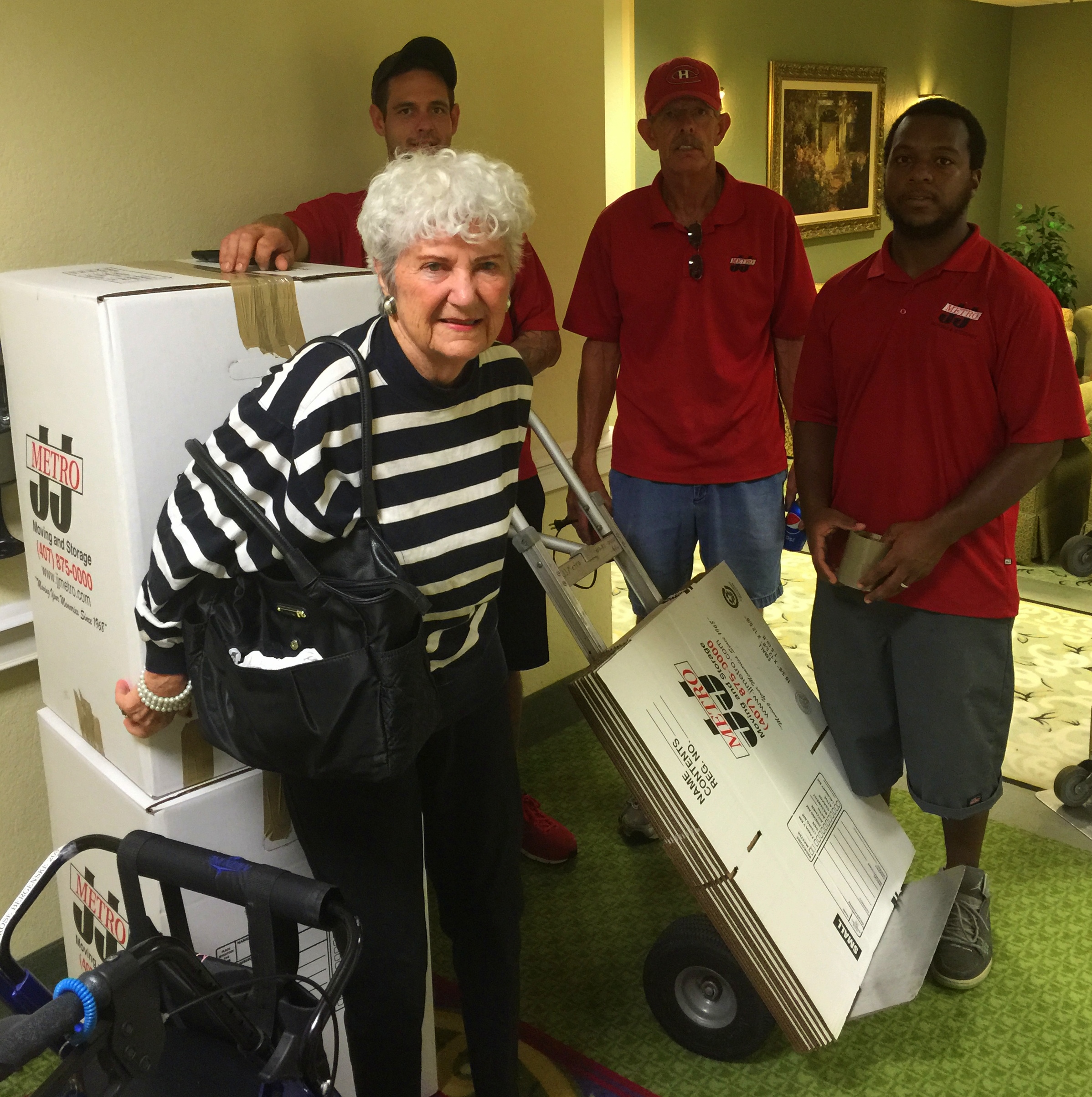
|
List of what to bring when you move in (please remember to only select items that will bring comfort and provide familiarity to their new surroundings) o Pictures o Knick knacks o Pillows, o Comforters/quilts if they have a special connection to them, o Toiletries (electric razors only, toothbrushes, combs and brushes, perfumes, dental trays,) o Stationary, puzzles and other such favorite past-times o Music o Medical devices and all associated equipment and supplies o Clothes |
Label everything including clothes.
This will help you keep things straight and provide boundaries between residents. Developmentally disabled and dementia patients are not as aware of the concept of personal property. Labeling will help you track down items that go missing, which always happen. It’s funny how a permanent marker can help you avoid conflict.
Large items.
De-emphasize household goods and furniture. They will just complicate the move-in process and add stress and weariness when it’s not needed. After all, you are a care home and not a storage facility. Sometimes though it can bring comfort to have a few big items around. I remember bringing in a baby grand piano into our home once. Use your experience and people observation skills on what big items will help the resident adjust quicker and what will be just a lot of unnecessary confusion causing extra work.
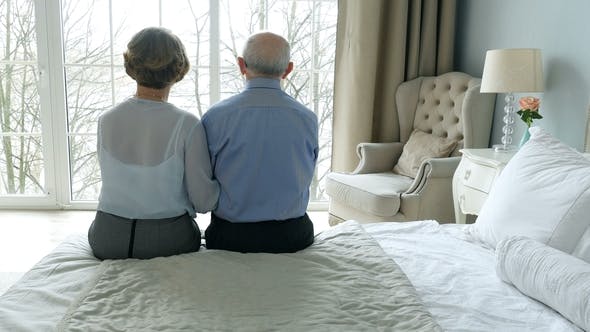
Bedrooms
In my experience bedroom furniture is an exception to the large item rule. Bedrooms are like a pseudo-apartment. It is the haven they can escape to when they want to be alone. It is also the environment where their brain is the most tired and prone to confusion. Either in the low light of the middle of the night or upon getting up before they are fully awake. Having a lot of familiar items around helps relieve confusion considerably. Also, you sleep better on your own mattress and pillow.
Arrange and decorate with purpose. Eliminate trip hazards and make access to clothes and the bathroom a priority. It will have the added benefit of making your daily chores easier. Add bright and positive colors with pictures or flower arrangements. Put a personalized wreath or other personal items on the door. It labels the room “Home” and helps with navigation in the early days after the move-in.
An above and beyond idea that has several benefits is involving the new resident in making the door wreath or plaque. Have them choose the personal items to include and or sign their name. Take a picture and add it to the display. Their involvement helps them feel in control and labels the place “Mine”. It also gives them something to show off to visitors.
Dementia.
Take time to train the family before moving day about the special care requirements of dementia and the developmentally disabled. When there is dementia or other limited mental acuity issues the family should do most of the selecting and packing of items. Leaving all the decisions to these kinds of patients can add too much stress and lead to serious confusion and lashing out in anger. Also, be cautious with discussions about moving before moving day. The more limited the mental capacity the easier it is to get them wound up and worried (anticipation anxiety).
It will be a balancing act between including the patient in the decision process to garner cooperation and pushing them over the edge. When in doubt go slow, take time to pack over several days, and move when they are at their mental best. Reduce the surprise factor as much as possible. Another suggestion is to take the patient on an outing and while they are gone move all the items. In these types of moves be ready with explanation talks with the new move-in.
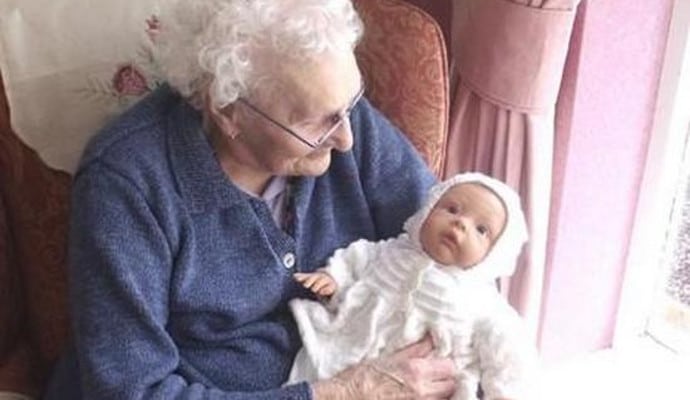 One trick I heard of is giving a baby doll to take care of. The doll can become real in a sense and have a great calming effect. Some memory care units even have baby stations.
One trick I heard of is giving a baby doll to take care of. The doll can become real in a sense and have a great calming effect. Some memory care units even have baby stations.
“While the baby doll approach isn’t limited to only women, men might respond to tools, stuffed animals, woodworking, and other crafts. The theme here is that when facilities figure out what your loved one was interested in as children, they can help recreate aspects of those interests. You might have key insights that can lead to a breakthrough.” – Pam Silverberg
Time of day to make the move
The best time to schedule the move is mid-morning when they are rested and fully alert, or Mid-afternoon. Suggest a time when all your house chores are done so that there will be less commotion and you can fully focus on the new resident. A calm environment will be easier for patients with dementia.
Medications, medical devices, and therapies.
If there is no primary care physician get one before you allow anyone to move into your home. Because the most important conflict-relieving thing that you can do is to get approval in writing from the primary care physician on all medications and therapies. Do it before the resident moves in or at least as soon as possible thereafter. Doing this in a timely fashion will allow you to use the primary care physician as a shield to deflect most arguments with the new resident about medical concerns. They will be less able to argue with you about such matters because you are just following the doctor’s orders.
If difficulties continue you can still deflect the issue by saying something like, “I understand the confusion, with the move and all it’s easy to see how the ball was dropped. Let’s make an appointment with the doctor to get these things straightened out.” If they still refuse to cooperate, they still have a right to refuse. Record the refusal in the MARS and send all the details to the doctor. Let the primary care physician deal with the problem, that is what he or she gets paid for.
You might be able to sidetrack the whole affair with some astute questioning about why they are refusing. It might be as simple as they are tired and don’t want to deal with any more changes. They may also have a misunderstanding of what the medication does or a fear of what will happen if they have a change in their medication routine. Arguments such as these can be handled by saying that you are on their side and will monitor the situation closely to prevent problems. You can also say “I will pass on your concerns to the doctor at my earliest convenience and will help straighten out the issue.
I suggest the most efficient way to handle medications is either to visit the home or have someone responsible go through the house and record everything they find. Remember to include OTC, herbal remedies, and expired medications.
- Make a list of all medications found and send it to the primary care physician. Include the prescribers name, strength of the medication, the instructions, and date of expiration.
- Do not assume the primary care physician knows what is being taken. All too often, nobody told the doctor about medications from other prescribers, or the patient has kept taking discontinued medications for various reasons.
- Remember to follow up with the doctor on what to keep and what to throw away.
- Get prescriptions for all OTC meds.
- Make an updated list of meds and get into the MARS.
- Work with your primary pharmacy to transfer all approved prescriptions and fill new otc prescriptions.
- Don’t forget to give insurance and allergies information to your pharmacist.
- Be aware that the medication may look different from what the patient is used to. Different pharmacies use different generic brands. You can resolve such issues by reading to the patient the pill description off the prescription label, auxiliary stickers on the bottle, or information sheet that comes with every prescription.
- If you can accomplish these medication-related tasks before the new resident moves in that will make things a lot easier for you.
Little courtesies.
It is easy to focus on the physical aspects of the move and forget the emotional needs of the new resident on moving day. Keep your eye on the patient and watch for body language and verbal clues for warning signs of too much stress. Stop every now and then to just talk to the new move-in and or their family. Kind of like when a waiter checks in at the table at a restaurant.
Other little courtesies are:
- Prepare a favorite snack or meal on the first day of arrival. Comfort food takes on a whole new meaning on moving day.
- Give a move-in day present.
- Give contact information to the family on premium giveaway items, like pens, paper pads, calendar, frig magnet, etc.
- Have their favorite music playing in the background. Don’t underestimate the comfort power of a favorite tune.
- After the bedroom is set up, see if they would like to take a nap.
Be prepared to hear complaints.
Make sure you are really hearing the resident’s complaints. Just dismissing their validity can lead to even bigger issues later on. Do not view complaints as a negative. View them instead as a call for help. Be patient and be ready to explain what is happening over and over again. Often what is really wanted is just a reassurance that everything will be okay. Point out how wise they have been in choosing a place that will improve their lives, then list the features of your home.
There are those who need to work things out verbally and complaints are just their way of adjusting. Fear of the unknown also drives negativity. Empathy statements are just the ticket in these cases. For example, “Moving is such a pain, right? Don’t worry, you’ve survived far worse things in your life.”
Remain positive and upbeat regardless of what happens or what is said. The new move-in will most likely reflect your positivity back to you. If you are anxious or fretting, they will reflect that back to you. Pass on the same advice to the family members involved in the move.
The family.
Be aware that the move may be harder on the family than the resident. Their feelings of guilt and anxiety are poison to the environment on moving day. Watch for the warning signs and be prepared to help.
- Keep them engaged or occupied with tasks.
- Acknowledge their fears and show empathy.
- Remind them they are doing this to give a better quality of life for their loved ones.
- Do not be afraid to politely remove them from the situation. For example, “I have things handled here, why don’t you take your loved one for a walk so they can become familiar with the neighborhood. Be back in about 15 minutes”

After they move in
The transition process continues long after move-in day. The ability of the new resident to cope with the change will vary widely. It depends on what life skills they have developed, what medical conditions handicap their efforts, and what support they get from their family. It can take new residents up to 3-6 months to finally call your home their home.
Do not make the caregiving mistake in thinking this settling-in process will happen quickly or automatically. Developmentally disabled residents will have a reduced ability to understand what is going on. Mental Health patients’ minds will be tainted by their conditions and geriatric residents have physically lost some of their ability to cope with change due to the aging process.
It is critical to understand that these new residents are patients that need your caregiving skills to adjust to their new surroundings. It will take much more than being patient. Caregivers will need to take an active role in assessing where the difficulties lay and overcoming any conditions that may prevent a smooth transition.
Unfortunately, I know of no “one size fits all” program or set of procedures that will work in all care homes. There is no large college or government department studying how to best run a care home to optimize the assimilation of new residents. The only school that I know of that will tell you what will work for you is the school of hard knocks. The following material is what the school of hard knocks taught me. Use this material with an open mind and a grain of salt. I hope you will find it useful and effective.
Care Philosophy- The Benevolent Dictator
This is not” Do what I say because I’m in charge”, which rarely works. Believe me, I tried that over and over with the same lousy results. It is more,” Do what I say because I know best” This will work on the developmentally disabled, autistic, and the shy or timid patient. You can tell which patient to use this care philosophy on because they will be
- Constantly asking for directions on what to do next.
- Blank or confused in facial appearance or body language. The absence of reaction is actually the resident quietly waiting for the next set of instructions.
- Constantly worrying that they are doing something wrong.
When you observe these tendencies be ready to step in with an organized program and stick with it until it becomes a habit. This approach will work better if you apply it as a teacher, not a prison warden. Compassionate and patient consistency will be the key to a smooth and speedy assimilation into your home’s routines. If difficulties arise, first ask yourself, “what don’t they understand”. You can also garner cooperation by allowing them some input on when and how things are down. Some suggested tools to use are:
- Have orientation sessions that instruct how to fit into your home’s routine.
- Written step-by-step procedures that the resident can use as a reference. You can post them in their room or laminate pocket-sized versions for personal use.
- Picture Flashcards that show what to do next. You can make your own or do an internet search for free downloads. Use the search phrase “activities of daily living flashcards” to get started. You will have to worry about being age and ability appropriate in their use.
- Apply labels such as drawer contents, door labels, and table setting assignments.
Care Philosophy- The Compassionate Manipulator
This is a care philosophy whose goal is to work with perceptions and influencers to maneuver a patient into choosing to cooperate by themselves. This works well for those whose sense of reality is impaired such as in dementia.
In dementia, the patient’s ability to perceive their environment has been physically impaired. They do not act the way you want them to because their reality is different than yours. It takes a great deal of effort to argue them back to your reality. It is much easier to match their reality and then reason with them.
I heard a story that is a perfect example of this. An Alzheimer's patient wandered out of the facility where he was staying. The staff asked a visiting barber to help in the search for him. The lady barber found him wandering down the street. She asked him what he was doing and he said he had to go to work. She entered into his reality and said “Look at you, you’re not ready for work, you look a mess. Let me help you back to your room where I’ll help you spiff up. He voluntarily followed the barber back to the facility. Everything was going well until they entered the facility where the staff practically tackled the patient and dragged him back to his room. Which approach do you think was easier and more successful?
Some suggested care techniques are:
- Appeal to trusted authority- Until you earn their trust, they will not readily follow your instructions. So, find out who they do trust and phrase the instructions as if they came from them. Also, have that trusted authority endorse you often.
- Divert attention- Do not confront the issue head-on, first get them to think of something else and then ease into the instruction from the side. An example is if they are wandering around trying to find non-existent stairs say “Okay, let’s look past the kitchen”. Then offer them a snack. When they finish the snack and say, “I just love snacks don’t you? Now, what were we doing? Oh yes, I remember now. We were heading to (fill in instruction)
- Short-term memory loss- Take advantage of short-term memory loss to make it appear that have already agreed with the instruction. For example-
- This is what you always have done, it must have just slipped your mind. Do you really want to change now?
- You told me to remind you of (instruction) if ever you forgot again. I’m just doing what you told me to do.
- Control the environment to reduce confusion. Too much input overloads a compromised brain leading to confused behavior. Limit choice selection, make the choice for them, reduce noise, reduce commotion, etc.
Care Philosophy- Root of the Problem
I have done it myself. You’re involved in getting the morning chores done and a problem arises. You’re busy so you make a snap judgment of what the problem is so you can speedily resolve the issue. But you guessed wrong, and the problem escalates. The keyword is guessed. I wonder how many problems we escalate by guessing at the solution before we understand what is causing the problem behavior. Care homes do have their busy moments. But in reality, your day is not that filled up. There is almost always extra time in the schedule to find the root cause of an issue. Take the time to ask the right questions, really observe behaviors, and search for the root cause of the problem.
Case in point, a normally rationally acting elderly lady would sometimes get very confused and try to enter into several neighborhood homes. After really looking at the situation it turns out that she would get confused only after taking multiple prn medications. When taken together, they caused dementia-like behavior. The answer was not more drugs to control behavior, but fewer drugs.
Here are some caregiver tools that can help you get to the root cause of a problem.
Look for chemical crutches that only mask the root cause of an issue
I would venture to say that the vast majority of new move-ins are on too many drugs that rely on relieving symptoms to cure a problem. I call them chemical crutches. It is understandable that this happens. A patient develops a health issue and they go to the doctor's office seeking a solution. The busy doctor usually responses by prescribing a drug to control the symptoms of the problem. The symptoms are resolved so the patient thinks they are “cured” and stops taking the med. But the underlying cause remains so the problem returns. The caring family notices another occurrence of the problem so they, in turn, insist on getting another pill from the doctor to “cure” the problem. Then the patient goes to the ER and obtains another medication, etc, etc, etc. This phenomenon is called medication overload and it is a real epidemic problem today.
I suggest that when a new resident moves in, you review their med list with the purpose of getting rid of unnecessary drugs. In-Home caregivers are in the perfect position to reduce medication overload. You live with the patient and have the time and opportunity to control problems without having to rely on chemical crutches type solutions. Since you are working on the underlying cause of the issue it tends to stay under control. In addition, since there are fewer drugs used, there are fewer drug-related problems that crop up. That means fewer side effects, and fewer overly medicated patients to deal with. As a bonus, there is less MARS charting to do. We all want that.
Look for alternative explanations of what is going on
Take the time to think about alternate explanations before responding to issues. Like Sherlock Holmes, do not jump to conclusions but use all your senses to search for underlying causes.
I remember an elderly gentleman who started to have behavioral problems. I asked him some questions and he would not cooperate. I paused and thought, “what is the root problem?” I then noticed that one of his pupils was larger than the other. He was not acting up. He was having a stroke.
Use empathy to address the emotional elements of an issue
Humans are not rational creatures. We tend to respond to issues emotionally. We use anger or sadness as emotional tools to get other people’s attention. The emotional signaling will continue until they are acknowledged, and appropriate action is given. The use of empathy is an effective way of acknowledging the emotions the resident is feeling. It tells the patient that we understand why they are emotional and are here to help. When we validate the need for the emotion then there is no need for it to continue and the emotional behavior subsides.
Just to be clear, the definition of empathy is the capacity to understand or feel what another person is experiencing from within their frame of reference, that is, the capacity to place oneself in another's position. Acknowledging feelings is like empathy in work clothes. I found an example of how a dementia care specialist used empathy to deal with a dad who was having difficulty transitioning to a memory care facility.
“This is what I do instead: I listen. I listen to every last bit of it. True, it’s easier for me because your dad isn’t pushing my buttons. Still, I listen. And I empathize and validate. Instead of trying to convince your parent how great it’s going to be, I listen and then I tell him I can absolutely see why he’s so upset. I’m certain I’d be upset too! I hate the whole deal for him. I reassure him he never, ever has to like it. The End. No arguing.”
With the emotions under control, you can now deal with the real problem. What care philosophy works the best is case-specific. Practice at all three so you can be skilled in any situation. The harder you work at this the easier your job will get, and we all like easy.
Visits from Family and Friends
Visits from family and friends is an important resource that caregivers can utilize to make the new resident feel more content in their new surroundings.
- Visits can fight depression and reduce feelings of abandonment.
- They are opportunities to build trust as families endorse you as an expert.
- Praise from family can build pride in accomplishments in the resident.
- Visits are opportunities to blow off the steam of frustrations and work out their feelings with someone who cares.
- Visits can divert attention away from complaints.
 But be careful, visits are also a double-edged sword that can cut both ways. They can add to the confusion, create tension and emphasize misery. Pay attention to how the patient reacts before, during, and after the visit to determine if the visits are helping or hurting the settling-in process.
But be careful, visits are also a double-edged sword that can cut both ways. They can add to the confusion, create tension and emphasize misery. Pay attention to how the patient reacts before, during, and after the visit to determine if the visits are helping or hurting the settling-in process.
To minimize negative outcomes, train family members how to effectively visit to help with the transition. Depending on the amount of dementia forgetfulness or other mental handicaps, encourage short but frequent visits. Try to discourage outings until after they have more or less become comfortable with your home. Offer in-home activities to make the visits more meaningful (host a tea party or provide the materials to create a photo album).
Utilize technology. Emails, Texting, telephone calls, video chats, Zoom meetings, and skype chats can all be used instead of in-person visits to increase visits or control interactions that cause difficulties. Finally, do not overly rely on the family visits to solve problems. It makes you look like a poor caregiver in the eyes of the family.
Other Helpful Hints
- Routines build habits and habits create a familiarity that turns a house into a home
- A photo collage board or display of new and old pictures creates a bridge between old and new living arrangements.
- Create an activity box filled with elements of old hobbies so that their favorite interests can continue or be rekindled.
- Provide materials or act as a scribe to encourage writing letters or greeting cards to loved ones.
- Provide kid-friendly activities for visiting family members to reduce the trouble board kids can create.
- Do not prejudge negativity as bad. Instead, see it as a request for attention. Listen to the emotions behind the words. Is it anger or fear that drives the complaint? Pay particular attention to non-verbal cues, like body language, facial expressions, posture, and gestures. They can help you determine the seriousness of negative comments.
- Encourage friends and family to bring activities with them to make the visit more enjoyable.
- Always have an activity ready that can be used as a diversion to take the mind of the resident away from troubling behavior. Walks, magazines, treats, music, games, puzzles, computer games, and cards can all be used to divert attention.
- Be prepared for bad days and expect setbacks. They are just part of the caregiving profession. Remain positive, be in control and act proactively and bad days will pass. Be assured that they always do.

Conclusion
Moving in a new resident is a lot of work for the caregiver, patient, and their family. It requires an adjustment to a new life circumstance that may or may not go smoothly. In-home caregivers should not assume that the needed adjustments will happen automatically. They should be prepared to take an active role in the transition process. Caregivers should plan ahead to ensure that the training, resources, and materials are there when they are needed to handle problems and speed up the transition process.
As always Good Luck in your caregiving efforts.
Mark Parkinson BsPharm
References:
- Six Tips to Help Seniors Transition to Nursing Home Life. Caregiver Training Blog, mmLearn.org. Apr 12, 2017. https://training.mmlearn.org/blog/six-tips-to-help-seniors-transition-to-nursing-home-life
- Alexis Hansen, LCSW. How to Ease a Loved One’s Transition into a Nursing Home. Good Therapy. Jan.5, 2016. https://www.goodtherapy.org/blog/how-to-ease-loved-ones-transition-into-a-nursing-home-0105164
- Esther Heerema, MSW. 6 Ways of Helping Your Loved One Adjust to a Nursing Home. Very Well Health. Apr 06, 2020. https://www.verywellhealth.com/help-a-loved-one-with-dementia-adjust-to-a-nursing-home-97697
- 15 Tips for Transitioning to Assisted Living. Summit Hills. https://summit-hills.com/blog/15-tips-for-transitioning-to-assisted-living/
- How to Prepare Your Loved One and Yourself When Moving Them into a Nursing Home Facility. Nursing Home Abuse Center Blog, Nursing Home Abuse Center. March 2, 2018 https://www.nursinghomeabusecenter.com/blog/moving-a-loved-on-into-a-nursing-home/
- Jennifer Trowbridge. 50 Tips on Transitioning a Loved One to Memory, Dementia, or Alzheimer's Care. Seniorlink Blog, Seniorlink. Feb 12, 2020 https://www.seniorlink.com/blog/50-tips-on-transitioning-a-loved-one-to-memory-dementia-or-alzheimers-careyour-blog-post-title-here
- Transition to Long Term Care. Careconversations.org https://www.caregiversns.org/images/uploads/tiac/TiAC%2020180125%20Transition%20to%20LTC.pdf
Exam Portal
click on [Take Exam]
Purchase membership here to unlock Exam Portal.
|
|
|
|
|
*Important*
Registration and login is required to place your name on your CE Certificates and access your certificate history.
Username MUST be how you want your name on your CE Certificate.
| Guest: Purchase Exam |


